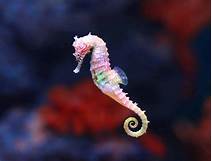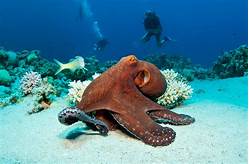Can You Keep Seahorses as Pets?
Seahorses are fascinating and unique creatures that have captured the attention of aquarium enthusiasts worldwide. With their intricate body structure and graceful movements, they bring an undeniable charm to any marine tank. The question that often arises is whether it is possible to keep seahorses as pets.

Grooming and Maintenance
1. Provide Adequate Space: Seahorses need a spacious and well-maintained aquarium to thrive. A minimum tank size of 10 gallons per seahorse is recommended, as they require plenty of room to swim and explore.
2. Ensure Proper Water Parameters: Seahorses are sensitive to changes in water conditions, so it is crucial to maintain stable parameters. Regularly test and adjust water temperature, salinity, and pH levels to ensure they are suitable for the species you keep.
3. Create a Natural Habitat: Seahorses appreciate a naturalistic environment that mimics their natural habitat. Include live rock, macroalgae, and other decorative elements to provide hiding spots and a sense of security.
Feeding and Diet
1. Provide Live Food: Seahorses are obligate predators who require live food for sustenance. They typically feed on small crustaceans, such as brine shrimp, mysis shrimp, and amphipods. Frozen or freeze-dried food is generally not accepted by seahorses.
2. Establish a Regular Feeding Routine: Seahorses have small stomachs and need to eat frequently. Aim to feed them two to three times per day, offering small amounts of food each time. Overfeeding can lead to health problems.
3. Monitor Food Intake: Keep an eye on the seahorses' feeding habits to ensure they are getting enough to eat. If they appear disinterested in food or are losing weight, adjust the feeding schedule or try different types of live food.
Socialization and Compatibility
1. Keep Seahorses in Pairs or Small Groups: Seahorses are generally social creatures and do best when kept in pairs or small groups. However, some species may be territorial or aggressive toward one another, so it is important to research the specific species you plan to keep.
2. Avoid Mixing Seahorse Species: Different seahorse species may have different requirements or behaviors, so it is generally not recommended to mix species in the same tank.
3. Introduce Seahorses Gradually: When introducing new seahorses to the aquarium, do so slowly and carefully. Monitor their behavior and watch for any signs of aggression or stress.
Health Considerations
1. Quarantine New Seahorses: Before introducing new seahorses to the main aquarium, quarantine them for a period of time to monitor their health and prevent the introduction of diseases or parasites.
2. Be Aware of Common Diseases: Seahorses are susceptible to various diseases, including ectoparasites, fungal infections, and bacterial infections. Regularly inspect the seahorses for any signs of illness and consult a veterinarian if necessary.
3. Maintain Clean Water: Clean water is essential for the health of seahorses. Perform regular water changes and utilize a filtration system to remove waste and maintain water quality.
Declaration: All article resources on this website, unless otherwise specified or labeled, are collected from online resources. If the content on this website infringes on the legitimate rights and interests of the original author, you can contact this website to delete it.




